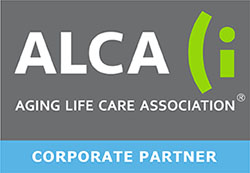The home care industry is notoriously fragmented, primarily due to the highly personal and local nature of in-home senior care services. Recognizing that families prefer to use locally owned and operated home care providers, many of the industry pioneers saw the power of franchising to create a trusted national brand through local ownership. “Families serving families.” As such, most of the largest US home care franchise networks were built out in the fifteen years between 1995 and 2010. Among the most successful were those with one Managing Owner focused on one community.
Today, the US home care industry is comprised of approximately 20,000 providers of which approximately 7,000 are franchises. The top quartile of the industry, in terms of annual revenue, are the 5,000 mostly single office providers that generate at least $2.75 million per year. More than half of these top performers are franchises.
So amid expanding demand from an exploding elderly population intent on aging in place, it was bound to happen that most franchise networks would be acquired by publicly traded companies and private equity groups. Of the top 15 franchise networks, only Home Instead Senior Care and BrightStar Care are owned by the founding families. Most of the rest are owned by well capitalized private equity groups with a keen eye on inorganic growth and the national network build-out opportunities from consolidation.
So far, the results have been mixed. Early data from the franchise networks that formed company operations to identify convertible non-franchises to acquire and run suggests that it mostly isn’t working. All too often, when a high achieving Managing Owner is replaced by a non-owner General Manager and the culture evolves from a family one to a corporate one, the business either declines or stagnates. This slippery slope can get even more treacherous when the brand name is eventually changed. By and large, consolidators have tended to underestimate the difficulty in replacing departing Managing Owners who are highly effective cultural leaders in an industry fueled by “passion, purpose, and profit.” This has created caution among consolidators and has caused the pace of acquisitions to slow considerably.
Think of it this way. All franchise home care providers, which make up the majority of home care market share, have agreements in place requiring the brand to stay intact. Most require that the business only be sold to a full-time operator. So consolidators or passive investors are not viable exit doors. That protects more than half of the industry from consolidation, assuming the local Managing Owner model remains. That leaves less than half of the industry as consolidation Targets under the aforementioned scenario, in which their “convertibility” to a new name and culture is questionable. So the home care industry is certainly consolidation resistance if not consolidation proof.
The strategic investor seeking to expand its home care footprint through acquisitions is now wise to the challenges of earnings sustainability when a highly involved and effective cultural leader departs the company. Ownership succession strategies that focus on management and cultural continuity are a mission critical component to optimizing the net sale proceeds upon exit.
One of the five enablers of our national exit planning platform is to “know your exit doors.” We welcome a confidential conversation about how home care company owners can get started.


